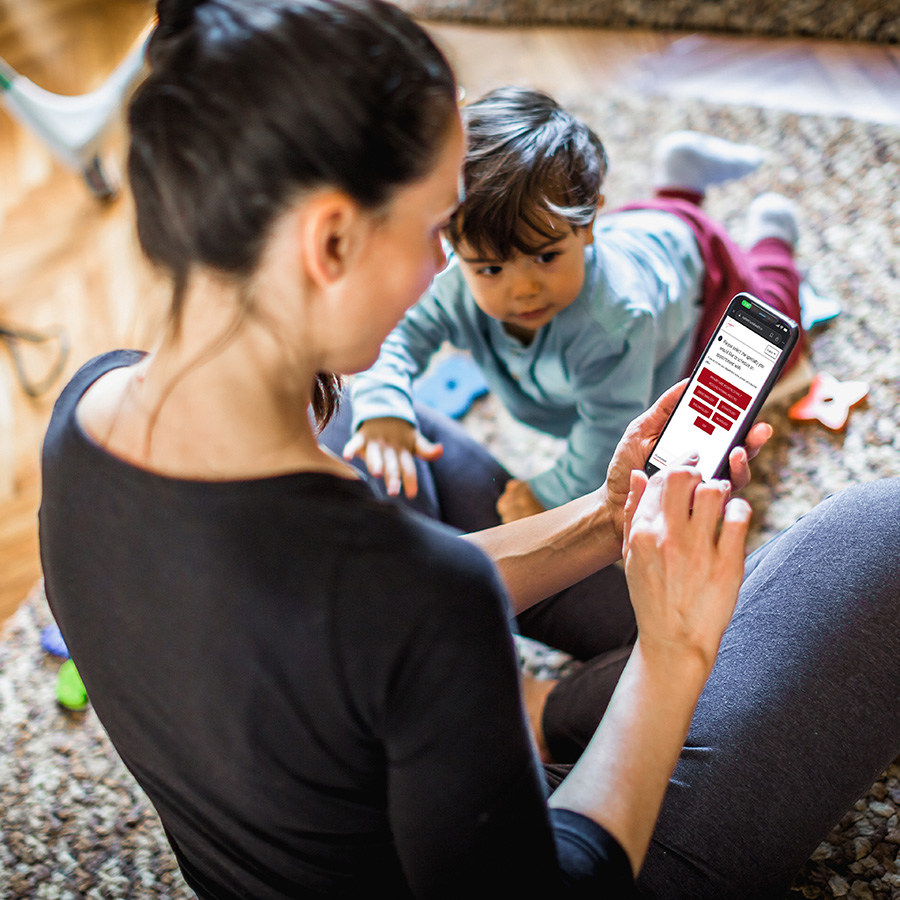
MATTHEW SINCOCK, MD
Latest Update from Our Experts Regarding (COVID-19), September 1, 2022
Dear community,
The Covid pandemic while it has changed over the past two years remains an active problem. Cases have varied with numerous surges including the Delta and Omicron waves. In recent months locally in New Hanover County and surrounding counties again the levels have varied at different times and locations but have fortunately not reached the peaks seen during those surges when our local healthcare resources were severely tested as many lives were lost. We have seen a smaller number of cases in general over the past several months though it has remained a steady presence.
The basics of infection control for Covid 19 are very likely to remain the same or similar. Vaccination remains our best tool against the virus. Other layers of protection include mask wearing (recommend use of a quality mask such as KN95 or similar but important to remember that any mask is better than no mask), physical distancing, and being aware that transmission remains significantly more likely when indoors particularly in crowded areas with poor ventilation. In addition, it is still possible that with any future surge or new variant, it remains possible that there could be changes to recommendations for infection control
For our current masking guidelines, please click here. Guidelines regarding the use of masks have changed over time at CDC. The use of a well-fitting quality mask remains an important tool to prevent the spread of the virus. At this point in the pandemic particularly for low-risk individuals in counties with low levels of transmission wearing a mask at all times may be less important. However, it is important to remember that not everyone is fortunate enough to be low risk or to have everyone in their family to be low risk. For some people taking additional precautions is an unfortunate necessity and it is important to recognize that the health needs of other people may vary from your own.
The need to wear a mask will also vary on your location. Visiting high risk areas such as healthcare facilities (including but not limited to hospitals, doctors’ offices, dialysis centers, chemotherapy infusion centers) where it is more likely there will be individuals at high risk for severe Covid makes it more necessary to take higher levels of precaution. This would also apply when visiting family or friends at higher risk for severe Covid (based on age or other health factors) where again additional precautions would be warranted.
For other settings CDC has offered guidance on when to wear masks based on community levels of Covid being either low, medium, or high as well as the individual risk for severe Covid.
Low community levels of Covid: At low levels of Covid 19 spread the choice to wear a mask can be made at any time. In addition, masks may be required in specific settings such as healthcare facilities or during travel/on public transportation.
Medium community levels of Covid: If you are at high risk for getting severely ill from Covid, recommend wearing a well-fitting mask. In addition, if you have a high risk household member or other close social contact would recommend wearing a mask when indoors with that person.
High community levels of Covid: Wear a well-fitting mask. In addition, if you are at high risk for getting severely ill from Covid, consider avoiding high risk activities (such as crowded indoor activities) where exposure is more likely.
Guidelines on isolation for Covid have changed over time. It is important to recognize that if you have Covid you should isolate regardless of your vaccination status.
If you suspect you might have Covid but test negative, once the results are back you can end isolation.
If you test positive for Covid you should enter isolation which for most people lasts five days followed by another five days of taking additional precautions. It is likely an infected person is most contagious during the first five days of illness.
If you had no symptoms, then day 0 is the day of testing. If you never develop any symptoms of Covid at any time, then the time of isolation is for five days after the positive test (for example if you test positive on the 1st of the month your last full day of isolation would be the 6th while the total period of being contagious would be through the 11th)
If you develop symptoms of Covid, then day 0 is first day of symptom onset (regardless of day of testing). Again, if you developed symptoms on the 1st of the month your last full day of isolation would be the 6th while the total period of being contagious would be through the 11th)
For the first five days recommend isolation. After that time for days 6-10 would still recommend taking precautions:
- Wear a high-quality mask if you must be around others at home or in public
- Do not go to places where it is more likely to encounter people at higher risk for severe Covid (such as hospitals, doctor offices, infusion centers for example)
- Do not visit family or friends who are at higher risk for severe Covid
- Do not travel while still potential contagious
- When possible, during the second half of the contagious period still stay at home and separate from others as much as possible
- Use a separate bathroom if possible
- Do not share personal items (cups, utensils, food, etc)
- Seek immediate medical help if any severe symptoms develop
These recommendations do not apply to those who had severe cases of Covid, nor does it apply to those with significant immune compromised status (such as organ or bone marrow transplant as well as certain types of chemotherapy or other immune suppressants) who require a longer isolation period. For more information contact your doctor.
The pandemic from Covid-19 has unfortunately proven to be the deadliest outbreak seen in decades. With over 1,000,000 deaths in the USA alone without question this has been a deadly virus.
Early estimates about the mortality rate have varied and have been difficult to estimate given the number of asymptomatic cases. Early estimates were seen at approximately 3% while later estimates when accounting for asymptomatic cases suggested a rate between 0.5 -1.0%. Regardless the danger of the virus should not be underestimated and should not thought of as “just a bad flu”.
Recent variants include Delta and Omicron. Delta was significantly more contagious and led to a huge surge of cases including fatalities in our community. Omicron was more contagious yet, and while there was evidence it was slightly less dangerous because it was able to spread so quickly it still led to a tremendous number of cases and again fatalities in our community. It is important to realize that while small changes in the severity certainly have an impact, regardless the virus remains both highly contagious and highly dangerous.
As previous several factors do appear to increase risk for severe or fatal infection including advanced age, diabetes, coronary artery disease, COPD or other chronic lung disease, obesity, and certain immune-suppressing conditions. If you fall into one of those categories would recommend taking particular care to avoid the virus and would talk with your regular doctor about any steps that can be taken to make certain any chronic health problems are under the best control possible. Next to avoiding the virus the best way to prevent severe or fatal infection is to get vaccinated.
In addition, there have been a substantial number of false claims and conspiracy theories circulated about this virus. Please be aware that medical professionals here at Wilmington Health and across the country are risking their own health and the health of their families to provide the best care possible. Please do not make their job harder by spreading or entertaining misinformation.
For up-to-date information regarding COVID-19 in North Carolina, as well as information on vaccines, please visit: https://covid19.ncdhhs.gov/vaccines.
Click here to read frequently asked questions about the Covid-19 vaccines.
As previous information about the virus is being gathered every day. Information and new findings will be made at any time during the pandemic, and recommendations can and certainly will change over time. The primary method that the virus is transmitted is through direct person to person transmission through respiratory droplets over both short distances through larger droplets as well as airborne transmission over larger distances as well. Both the delta and especially the omicron variants have shown increased levels of transmissibility compared to earlier variants. Transmission over longer distances is of greater concern in indoor or enclosed areas with poor ventilation. Transmission through touching contaminated objects, then touching a mucous membrane (like the eye or nose) is possible as well but likely is a much smaller percentage of cases than those through respiratory spread. In general, indoor transmission is more likely than outdoor transmission but infection can occur in both locations.
All the recommendations that would work to prevent the spread of flu are applicable to preventing the spread of coronavirus:
- Get vaccinated, wash hands, and wear a mask!
- Using a mask that is high quality (preferably a KN95 or similar) and that is well sealed on the face is important to achieve the highest levels of effectiveness
- Avoid touching eyes, nose, and mouth as much as possible.
- Avoid close contact with people who are sick.
- Clean frequently touched objects with regular household cleaning spray or disinfectant
- If you are ill, wearing a mask to help prevent yourself from spreading the virus is crucial. Wearing a mask, in general, when out in public is also helpful as if you are sick and do not yet have symptoms, you can still be contagious, and wearing a mask will again help prevent yourself from accidentally spreading the virus.
- Wearing a mask also protects yourself should you be exposed to the virus; the mask will prevent some portion of that virus reaching your mucous membranes and the smaller the initial viral exposure the less severe the infection
- If you are ill with fever, cough, shortness of breath (or difficulty breathing), chills, repeated shaking with chills, muscle pain, headache, sore throat, and/or new loss of taste or smell, stay home and do not go to work or other areas where you are likely to spread the virus.
- Social distancing (staying six feet from other people, no direct contact, avoiding large crowds especially in enclosed/cramped areas) is very important to slow the spread of the virus.
- Avoid large indoor crowds in poorly ventilated areas particularly where there are large numbers of people talking as that is a scenario very well suited to spread the virus
- Get vaccinated, wash hands, and wear a mask!
The CDC provides travel information, and all should follow the posted guidelines. Please visit the link below for more details.
https://wwwnc.cdc.gov/travel/diseases/covid19
Again, the recommendations for this virus will change over time as new information becomes available and as new variants arise. In regard to changing recommendations, we will continue to follow the guidance of the CDC as well as other local and state health officials.
Thank you for reading, and please follow our website and/or Facebook for ongoing updates! Wilmington Health will continue to monitor this closely!
Sincerely,
Learn more about Coronavirus Defense.
WH Research currently has COVID-19 clinical trials in-progress and is actively seeking trial participants. Click here to learn more.
